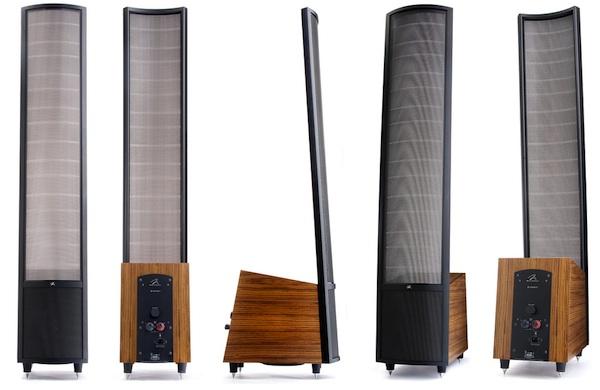If you are buying a pair of electrostatic Martin Logans, you are paying upwards of $2,000/pair. Why even consider using an AVR with speakers like this? Do yourself a big favor and buy a proper amp, one that is stable down AT LEAST to 4 ohms, and hook it up to the pre-outs on your existing AVR. You can get a nice Parasound 2x125 for around $775 MSRP, or a MASSIVE 2x250 for $1350 MSRP...and they will sound GREAT! (and last quite a bit longer as well)
Can I Use an AV Receiver with Electrostatic Speakers?

Q I have been reading A/V magazines for years, as well as conducting my own research, and am still a little confused about how to select the right amplifier to use with MartinLogan electrostatic speakers. The literature I’ve read clearly indicates that the ohm rating of a receiver is just as important, or more so, than its wattage per channel when considering an A/V receiver to pair with speakers. Does the ohm rating of MartinLogan electrostatic speakers make them incompatible with typical AVRs? I’ve asked different professionals at Magnolia (Best Buy) stores on various occasions and they always seem to point me at their most expensive AVR offerings, but I don’t know if their suggestions are legitimate or self-serving. To be clear, I am not looking for the cheapest product; I just want to get a better understanding of what my options are. —Albert L. Taylor / Houston, TX
A The idea that electrostatic speakers need to be paired with hugely powerful amps is likely a remnant of the technology’s early days, when gobs of power apparently was required to drive speakers that used it. But according to a FAQ on the MartinLogan website, its current electrostatic models, most of which have a 4-ohm rating, can be driven to satisfactory volume levels by regular A/V receivers—ones rated for 8 or 6 ohms. When I reached out to the company for further comment, Product Manager Devin Zell responded, “The impedance mismatch rarely causes problems under normal music/movie listening conditions—or even playing music loud (without driving the amplifier into clipping).” However, the company’s FAQ also notes that it’s “important that the amplifier be stable operating into varying impedance loads.”
Translation? A speaker’s actual impedance varies based on the frequency of the music or movie-sound content it’s called upon to reproduce. A model like MartinLogan’s Montis, for example, has a nominal impedance of 4 ohms, but that number could go even lower depending on what you’re listening to at any given moment. And since a lower impedance load requires more power, it’s important that the amp connected to the speaker can deliver it—particularly when cranking music loud—without overheating (which could cause the amp to go into shutdown mode). That’s why MartinLogan adds the caveat that any amp you use with its electrostatic speakers should be “able to deliver nearly twice its rated 8-ohm wattage into 4 ohms and should again increase into 2 ohms.”
As you might expect, AVRs that meet this requirement tend to be pricey, high-end models—which at least partially explains why the salesman at Magnolia were pointing you at their most expensive offerings. That’s not to say you can’t find affordable models that can nearly double their power into a 4-ohm load: Pioneer’s Elite SC-61, for example. And since you’re not on the lookout for the cheapest product, you should also check into getting a separate preamp/processor and multichannel power amp combo, an option that will extend your amplifier-selection universe.
- Log in or register to post comments
























































